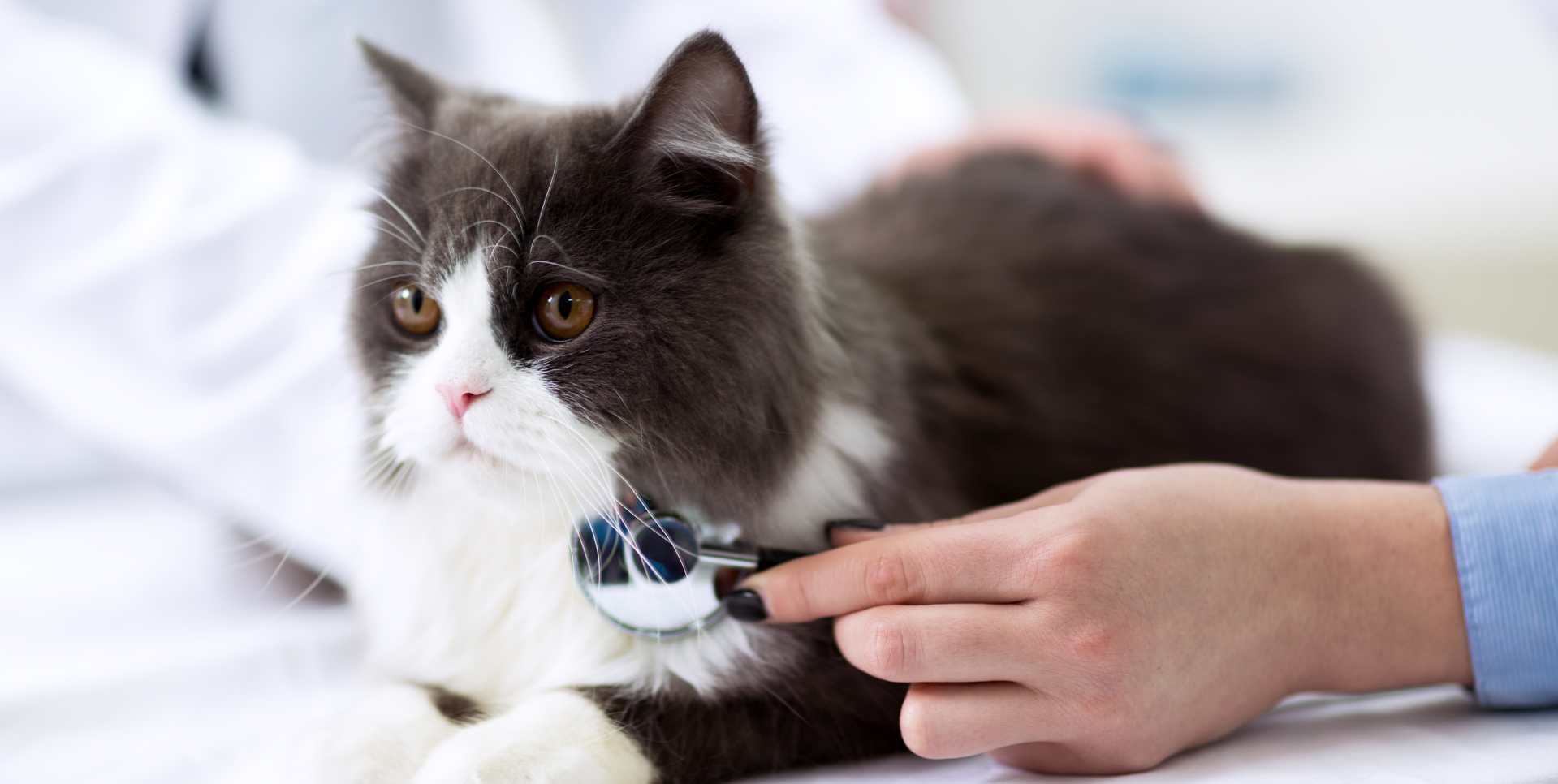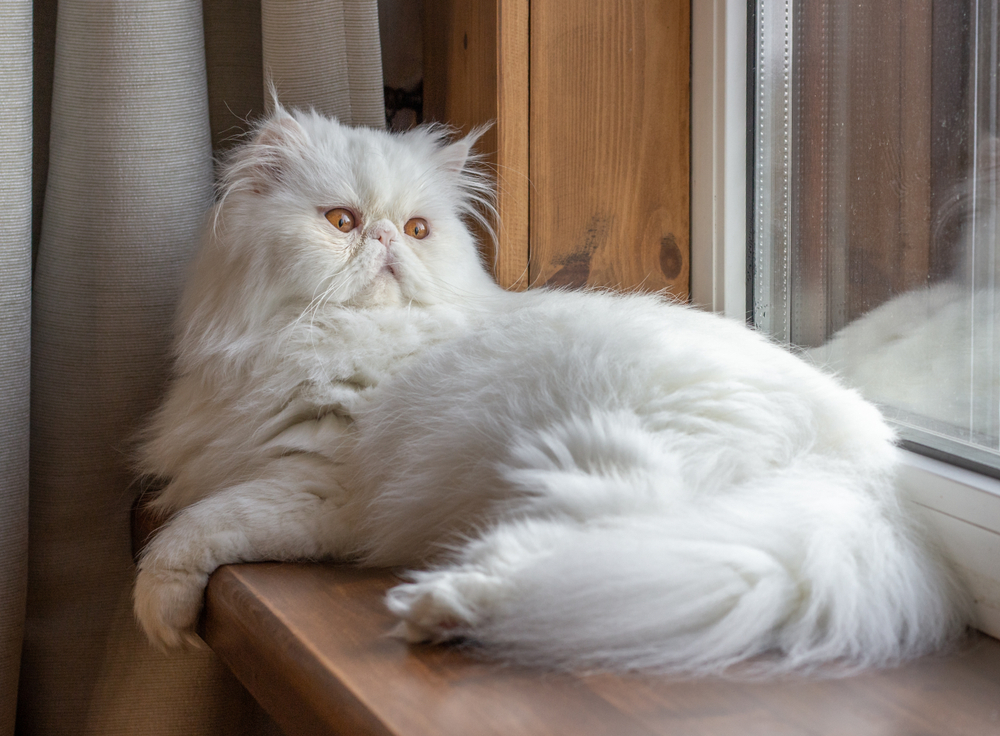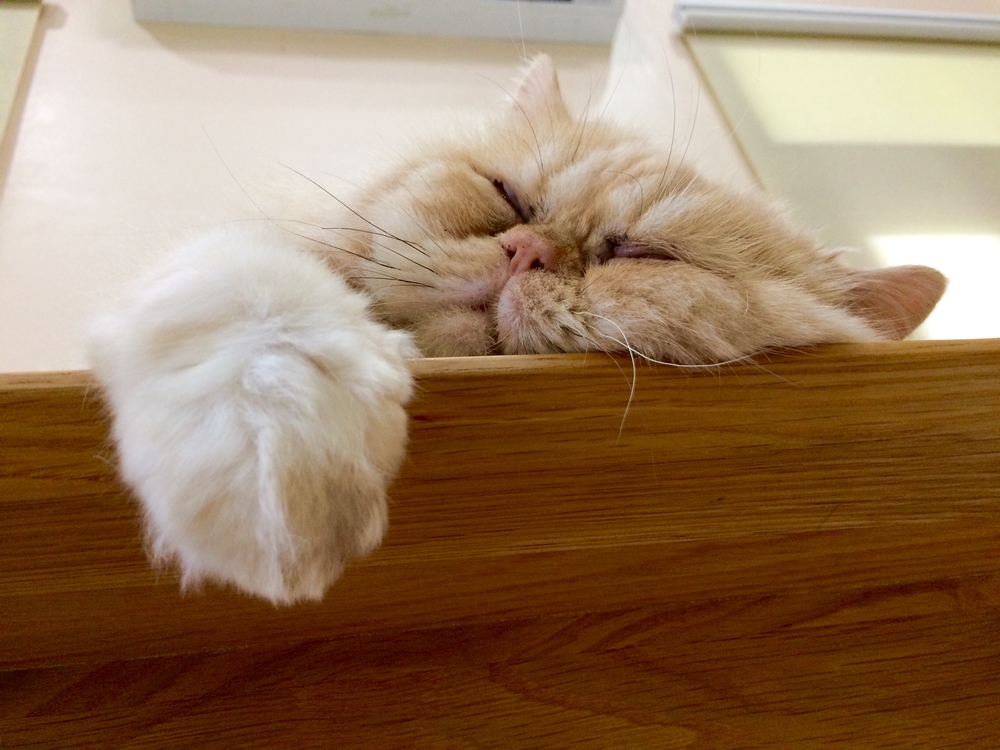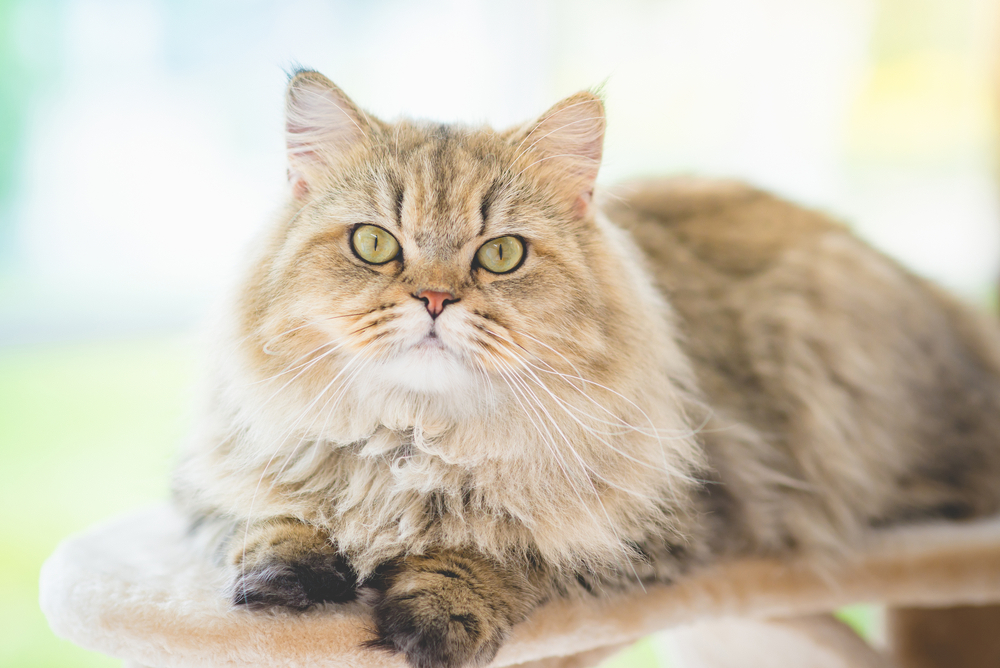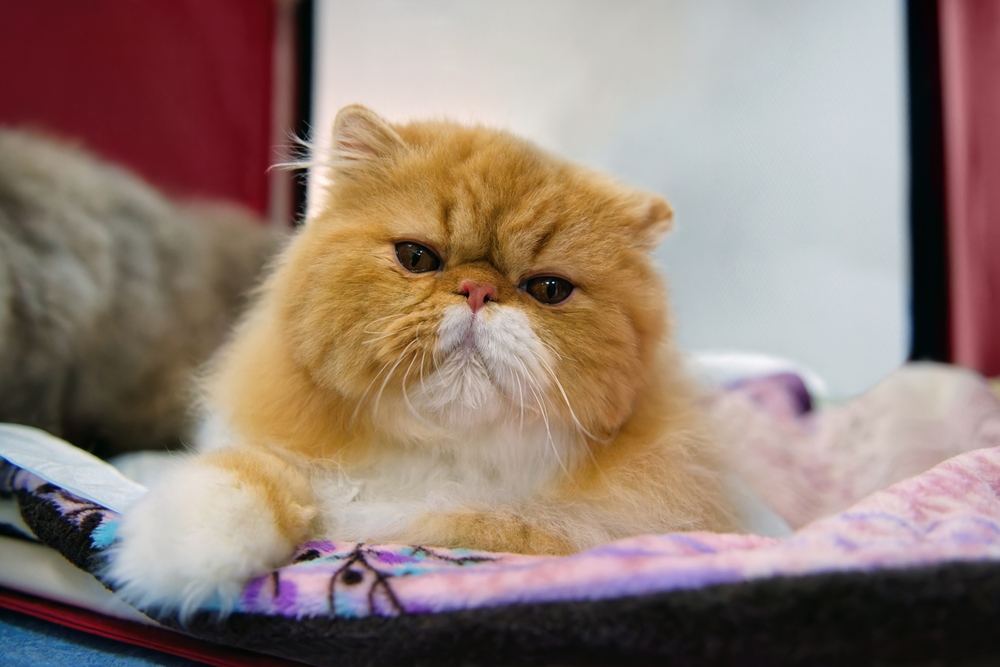📖 Table of Content:
A Persian cat’s health issues can vary, and if you own one, you’ll want to be aware of them. So many owners get a cat without doing thorough research on the breed itself.
Some cats, due to the anatomy of their bodies, are at a higher risk of catching a disease than others. For that exact reason, Persian cats could develop bigger issues, simply because they have a smaller nose, a flat face, and a small head that’s disproportionate to their bodies.
So, what Persian cat health issues could your fluffy friend develop that you need to be aware of?
We’ve compiled a list that will help you understand what you may be in for. They’re a little more health-sensitive than most cats, which means that you’ll have to take almost twice as much care of her. It’s important to keep her healthy and happy!
You know what they say: a happy cat equals a happy life. Or something between those lines.
8 Persian cat health problems to be aware of
1. Ringworm
Ringworm is a very common health problem in Persian cats. It’s a skin condition caused by a fungus that can grow in your cat’s skin or fur. This disease got its name because the rashes have a ring-like shape.
One of the main symptoms of this skin condition is hair loss in certain spots.
This isn’t fatal to cats, so you shouldn’t worry about it. However, it’s extremely contagious to other pets and humans alike. Once it spreads, it’s extremely tedious to get rid of. So it’s best to make sure that your cat doesn’t even catch ringworm in the first place.
Ringworm should never be taken lightly. That’s why you need to make sure that your cat is never exposed to a pet that’s already infected. If it’s too late, then you may have to isolate your cat for a while, until the skin condition is healed.
Once your cat catches ringworm, it’s important to take her to the wet so that you can get proper treatment for her. This treatment can include topical or oral medication, as well as certain shampoos to get rid of the fungal infection.
However, if you want to prevent it from even happening, I would say that regular grooming and bathing of your cat will help reduce the risk of her even catching it. Persian cats are at a much higher risk as their fur is very long, so you need to be very careful.
2. Brachycephalic syndrome
Brachycephalic syndrome is quite often associated with cats who have very short and flat noses. That’s why this health issue is quite common among Persian cats.
The main symptoms of brachycephalic syndrome are difficulty breathing, poor nasal drainage, coughing, or even wheezing and gulping air. Sometimes, they can even have trouble with eye drainage.
All of these symptoms mean that your cat has BAS. The most affected cats with the worst symptoms are peke-faced Persian cats. Their flat faces cause them to have severe health issues if it’s not treated.
The best way to minimize BAS is responsible breeding. Also, if you’re trying to adopt a cat, please avoid the most extreme face shapes because they’re more prone to developing this disease.
At the end of the day, you can only manage the symptoms of BAS, because there’s no cure for it. Putting your cat into stressful situations and letting her become obese are going to make the symptoms even worse, so try to regulate these things.
3. Dental disease
When we’re talking about Persian cat health issues, we also have to talk about the common dental issues that your cat can develop. This is, again, because of the shape of her head.
Two of the most common diseases that your cat can develop are Periodontal disease and tooth resorption.
The symptoms of Periodontal disease are gingivitis, inflammation, tooth pain, tooth decay, and even loss of teeth. It develops because of poor hygiene as plaque continues to build up within her mouth.
The best way of treatment is to simply take your furry friend to the vet to see what the best course of action would be. A professional will be able to clean her teeth and even remove some if necessary.
The second one that we’ve mentioned is tooth resorption. The symptoms are tooth pain and tooth decay, and professionals believe that it’s caused by Periodontal disease. There’s no home remedy for it. You’ll have to take her to the scary doctor.
4. Hypertrophic Cardiomyopathy
One of the Persian cat health issues that we need to talk about is Hypertrophic Cardiomyopathy. Persian cats are at a slightly higher risk of catching this disease if their owners aren’t careful enough.
This disease causes the cat’s heart muscles to thicken, which, in turn, alters her blood flow. If your cat suffers from HCM, her heart won’t work as efficiently, and she’s at a much higher risk of heart failure.
The most common cause of HCM is genetics, unfortunately. There’s no cure for it, but if it’s diagnosed via heart imaging, proper medication could be prescribed.
If you see that your cat is breathing harder or that she’s collapsing, it’s a good indicator that she has this issue. Also, paralysis of the hind legs is a very common symptom.
5. Polycystic kidney disease
It’s scary to know that your Persian cat can have so many different health issues. One of them is polycystic kidney disease.
This disease causes cysts to form inside her kidneys, and they can progress in a very short time span. Sadly, almost every cat that suffers from this has experienced kidney failure. There’s a very small percentage of cats that haven’t gone through this.
If you see that your cat is vomiting, or you notice a decrease in her appetite while she gets excessively thirsty, then she may suffer from polycystic kidney disease.
Because cats are such small creatures, it’s genuinely unrealistic to expect a veterinarian to be able to remove those cysts. The only way to prevent this is to take a thorough genetic test to determine whether there’s a chance of the offspring developing this disease.
The only way that it can be treated is by medication, to boost kidney function, and by making sure that the diet supports the kidneys as well.
6. Hip dysplasia
Hip dysplasia is also a common health issue for Persian cats. Dysplasia is an inheritable abnormality in the hips where the socket portion of the hip doesn’t fully cover the ball portion.
That’s why your cat has an increased risk of joint dislocation.
The one good thing about this is that it can be diagnosed at a very early stage. Cats mostly develop this at birth or in their early life. Usually, cats don’t really show any medical symptoms that can help you catch this right away, but a funny-looking walk will be enough of an indicator.
This disease is the most common in bigger cat breeds, like Maine Coon cats and Persian cats.
If needed, hip dysplasia can be treated through exercise, but also through surgery. Of course, every surgery has its own risks, especially considering that they’d have to sedate your precious feline friend.
7. FIP susceptibility
Persian cat health problems aren’t always genetically predisposed. For example, Persian cats are more likely to develop FIP susceptibility, which is an immune response to infection with feline coronavirus.
FIP damages the blood vessels in your cat, which, in turn, could cause fluid buildup in her chest and abdomen.
This is a viral, progressive disease that is almost always fatal, and there’s little to nothing that you can do to heal your cat from it.
Until recently, it was believed that there was no cure for FIP susceptibility. Even though there are still some uncertainties about the longevity of treatment, there are some anti-viral drugs that have been recently identified.
At the end of the day, the best thing you can do is to care for your pet. Fluid therapy, drainage of the accumulated fluids, and blood transfusions can also be used as a treatment for FIP susceptibility.
8. Thromboembolism
Hypertrophic cardiomyopathy (HCM) can cause blood clots to develop in your cat’s heart. These blood clots will travel through the main arteries into the body of your little friend, where they can clog the arteries and cause an immediate lack of mobility.
Most commonly, your cat will lose a lack of mobility in her hind legs and tail. In this case, your cat will need assistance in urinating and defecating, as they’re not able to control the lower part of their bodies.
A healthy diet and proper exercise is probably the only and best way to prevent this disease from developing.
When it comes to treatment, supplemental oxygen therapy seems to be the most beneficial. In the beginning, the affected legs shouldn’t be treated, or they should be treated minimally. As the blood flow returns to the legs, physical therapy should be introduced.
Passive extension and flexion of the legs, done by a professional, could speed up full recovery.
